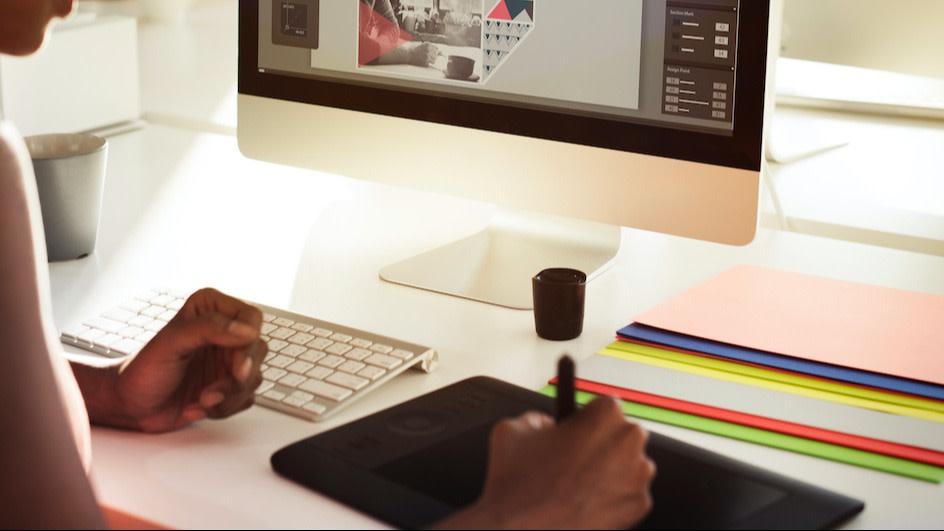Design Collaboration Guide: 3 Benefits of Collaborative Design
Written by MasterClass
Last updated: Jun 15, 2022 • 3 min read
Design collaboration is a design approach used by UX design firms in which multiple people work together to build a product design.
Learn From the Best
What Is Design Collaboration?
Design collaboration in UX design refers to a comprehensive process where multiple stakeholders in a project can give real-time feedback and perspectives through all stages of the design process. A collaborative design process usually involves three phases: ideation, creation, and revision. Through each step, the client and key players at a design firm, including product managers, marketing teams, researchers, and engineers, provide input on the process.
Design collaboration encourages buy-in from the client on their design—they know what’s happening throughout the project and can suggest changes at early stages. It also prevents teams from getting siloed: If a visual designer creates a design that’s going to be hard to implement, doesn’t meet legal clearances, or is missing something crucial for the marketing process, they may be forced to revise at a much later stage.
3 Benefits of Collaborative Design
There are several reasons why collaboration is important in UX design.
- 1. Promotes teamwork: In a collaborative design project, the entire team unifies around a shared vision or goal. Team members can support one another as they work towards solving design problems and delivering the product to the client on time.
- 2. Increases client buy-in: When a client is involved in the process, they feel a greater sense of ownership in the end result. This can also help streamline the design team’s workflow, as they receive real-time feedback rather than waiting until all work has been completed.
- 3. Provides a better user experience: Collaboration brings together multiple points of view and different skill sets. Working with a team can fuel innovation and inject creative problem-solving into the design process. Ultimately, this can be a boon to the overall user experience.
5 Phases of the Design Collaboration Process
There are five different stages of the collaborative design process.
- 1. Brainstorming: Before design begins, multiple conversations need to take place between the design firm and the client (this may be an external client in a design firm or even a different team in a larger company). The brainstorming process is essential for the design team to understand the specific design problem that must be solved.
- 2. Research: Once the design team has a clear understanding of the client’s design needs, they can research the market and the company, all the while sharing design ideas and concepts with each other. Using a vision board, teams present design concepts that can inspire the design phase.
- 3. Iteration: In UX design, the design work is iterative. Meaning that once a design approach is chosen, it undergoes multiple iterations to fine-tune the final product. Many design firms will schedule a design sprint—a specific timeline for completing an iteration of the design.
- 4. Feedback: User feedback for each iteration ensures optimal usability. Oftentimes, teams will test their designs before sending them to the client for feedback. At other times, clients can provide real-time feedback using a design collaboration tool. Receiving feedback in real-time can help increase buy-in from the client, as it gives them more ownership in the process.
- 5. Development: The final stage of the design life cycle ends once the client has approved all of the designs. Team members often walk the client through the project one last time to ensure that all the design elements are functioning correctly. Then, it’s time to launch the design. Once the design is launched, further adjustments may be required.
An Example of Collaborative Design
A typical collaborative design process might look like this: First comes the brainstorming session for the design project, where all team members meet with the client. The client expresses their needs for a new website design, and the project team proposes design ideas. The design team then works on iterations of the project, weighing in responses provided by other stakeholders. The design team sends the design to the client for proofing; this can be in the form of a prototype, mockup, template, or wireframe. Using a design collaboration tool—such as a digital whiteboard or interactive software—the client can leave real-time feedback, or annotations, for the design team’s consideration. The new designs are then revised, tested, and honed further.
Want to Learn More About Tapping Into Your Graphic Design Genius?
Get a MasterClass Annual Membership and let David Carson be your personal tutor. The prolific and decorated designer—who’s been lauded as the “art director of the era”—reveals his processes for going off the (design) grid, implementing typography in new and interesting ways, innovative uses of photography and collage, and so much more.
